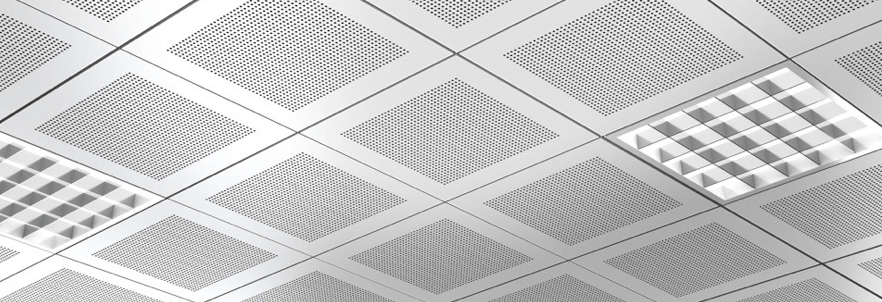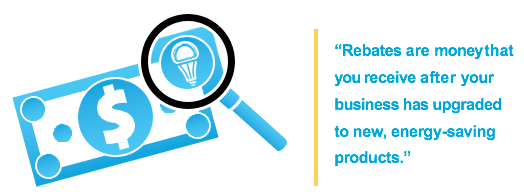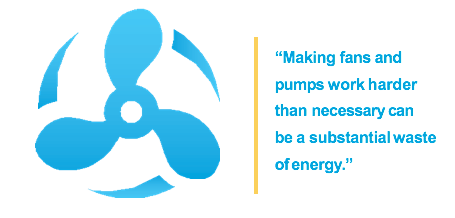Calculate Solar Savings
25 Energy Money Saving Tips For Businesses

Turn off equipment when not in use.
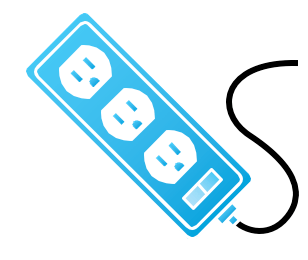
In addition, many types of equipment can unknowingly use energy. That’s why it pays to install PC power management software solutions. Here are some of the benefits:
- Cut electricity use to save $25 to $75 per PC annually
- Reduce office cooling loads to save an additional $10 to $25 or more
- Enhance data security
- Improve productivity by eliminating the daily computer boot-up wait time
Businesses that implement a PC power management solution can receive a rebate from PG&E of $15 per plug load occupancy sensor installed and a rebate of $15 per computer for those who install networked PC power management software.
“Turning off equipment reduces unnecessary power drain and is a no-cost step to reduce energy use and lower bills.”
Set thermostats to save energy without compromising comfort.

In warm weather months:
- Set thermostats no lower than 78 degrees Fahrenheit during occupied periods
- Keep programmable thermostats set to turn air conditioning on 30 minutes before people arrive and off 30 to 60 minutes before they leave
- Shut off exhaust fans when rooms are unoccupied unless health codes require constant ventilation
During cooler weather periods:
- Set thermostats no higher than 68 degrees Fahrenheit
- Set programmable thermostats to turn the heat on before people arrive and off before they leave
Close curtains, shades and blinds.
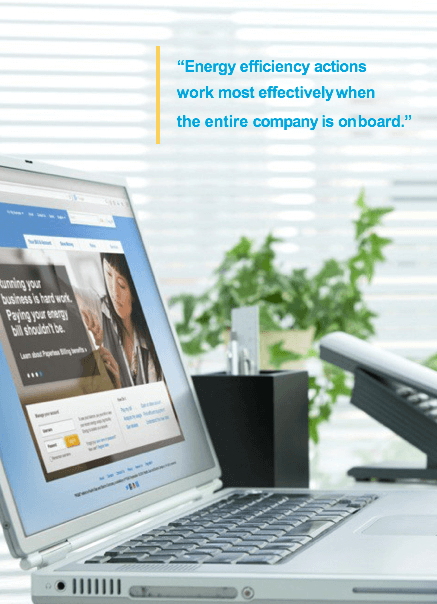
Simply close the curtains, shades and blinds in your business at night, during unoccupied periods of the day and on weekends. This will help maintain comfortable room temperatures and lower your cooling costs.
This practice can also help you save money during the winter. By closing curtains, shades and blinds at night and during unoccupied periods you can help your building retain heat.
Practice regular HVAC maintenance.
Service technicians have a mantra: “Maintenance matters.” That’s particularly true in the case of your HVAC equipment.
In Northern California during summer peak hours, HVAC units account for between 30% and 70% of the energy that commercial buildings consume.1 It’s also a fact that airflow problems can reduce an HVAC system’s efficiency by up to 15%.
That’s why it’s smart to:
- Clean evaporator and condenser coils
- Check and adjust refrigerant levels and cleaning blower components
With regard to the heating system, check all gas or oil connections, gas pressure, burner combustion and heat exchangers.
PG&E’s Commercial HVAC Quality Maintenance Program can reduce a business’s annual operating, service and repair costs by up to $500 per rooftop unit. The program can help your business get a higher level of performance, efficiency and reliability from your HVAC equipment.
Clean diffusers and lamps every 6 to 12 months.
Dust can actually add to your energy bills. That’s because it can build up on lighting diffusers and lamps and reduce the lumen output of your business’s lighting. A smart remedy for this is to clean dusty diffusers and lamps every 6 to 12 months. This no-cost tip will help increase the lumen output from your lighting fixtures to improve lighting in your workspace.
For even more lighting savings, replace incandescent light lamps with compact fluorescent lamps. You can also remove excess fluorescent lights and install reflectors to deliver ample illumination with less energy.
 Change to LED bulbs.
Change to LED bulbs.
How many employees does it take to change a light bulb? No, it’s not a joke, and the answer is “too many.”
If your employees are spending valuable time changing burned-out bulbs, they’re not focused on business. But you can certainly change that.
Here’s why it pays to begin installing light-emitting diode (LED) bulbs:
- ENERGY STAR1 LED light bulbs can last up to 50 times longer than the average incandescent
- LEDs use at least 75% less energy, which leads to lower monthly utility bills for your business
Did you know that nearly one out of every three dollars a small business owner spends on energy today is spent on lighting? See all the ways your business can save on energy efficient lighting in the PG&E Lighting Rebate Catalog.
Request a no-cost energy assessment from a PG&E energy advisor.
Did you know that your business has an energy specialist on call? It’s true. Your PG&E energy advisor is a technical specialist who will conduct an assessment to determine your optimal energy savings plan. In the process, your energy advisor will analyze your business’s current energy use and identify savings opportunities that you can capitalize on.
After the audit, you will have energy information tailored to your business and energy use to help guide your decisions. To request an audit, contact your PG&E representative or call our Business Customer Service Center at 1-800-468-4743.
What areas of your business use the most energy? Find out with an online energy audit inside My Energy. You can get customized savings recommendations tailored to your business.
Add weatherstripping around windows and doors.
You can reduce costly drafts at your business by adding weatherstripping, caulking or foam.
First, insulate around windows and doors to reduce drafts. In addition, use caulking to seal ducts, plumbing openings, recessed lighting and any other openings that allow air leaks in walls, floors and ceilings.
Here’s another important point: Choose a type of weatherstripping that will withstand the friction, weather, temperature changes, and wear and tear associated with its location. For example, when applied to a door bottom or threshold, weatherstripping could drag on carpeting or erode as a result of foot traffic.
“The edges of doors and windows are often not sealed well, and this allows unconditioned air to seep into your business or conditioned air to escape.”
Clear obstructed vents.
Here’s a wise business philosophy:
“Go with the flow.” In other words, don’t block airflow in your facility with furniture, paper, tools or equipment. That’s important because blocked vents require 25% more energy to distribute air.
So assess the area to see that air flowing from the vent is circulating freely and check any vents on the floor.
In addition, don't keep vents closed in an effort to save energy. Doing so can actually change the way air is distributed and cause an imbalance to the operation of the HVAC system.
 Check central heating and cooling duct systems for leaks.
Check central heating and cooling duct systems for leaks.
The ducts that circulate the cold and warm air throughout your building appear innocent-looking enough. But watch out, they can be big energy wasters. Sometimes they are not sealed properly. Other times they are not insulated well.
That’s why it’s a good idea to hire a contractor to make sure all the ducts that run throughout your building have duct sealant or metal-backed (foil) tape over the seams and connections. Then wrap the ducts in insulation.
By doing this, HVAC energy efficiency can be improved by 20% or more.1 In fact, it's now possible for contractors to perform verified duct sealing using a special fan to test duct system leakage before and after sealing.Create an energy savings plan with My Energy.
The more you know about your business’s energy use, the better you can plan and save. But you don’t have to plan on your own.
PG&E created a highly customized energy management tool for California businesses. It’s called My Energy and it has information to empower your decisions and resources to bring customized savings to your business.
It starts when you set up a My Energy profile. Then you can create a personalized energy savings plan that’s tailored around your business. Now you know where to start your energy savings plan, and you have 25 helpful tips to save money every day.
Use automatic daylight dimming to control lighting levels.

A lighting control is installed with a photosensor that measures the amount of illumination in a given space. Based on this information, the light output is automatically adjusted to maintain the desired illumination level.
Areas that benefit most from automatic daylight dimming include corridors, cubicles near windows and private offices.
Many California businesses are exploring lighting controls and occupancy sensors as a mechanism to reduce energy usage. Learn how this money-saving technology can work for you in PG&E’s free Guide to Lighting Controls and Occupancy Sensors.
Use time scheduling to turn lights on and off.
Business owners sometimes feel like they work 24/7. However, their actual operations probably follow some consistent hours and energy use patterns. That’s why time scheduling can help businesses save.
How it works:
- Set a control to turn lights on and off at fixed hours for automatic savings
- Use it to reduce lighting levels at preset times to reduce energy costs
Time scheduling also offers you control in case the normal work schedule changes during a busy period.
Here’s good news: Upgrading your lighting system is one of the best energy efficiency measures in terms of payback, ease of implementation and energy savings. To get started, visit pge.com to learn more about lighting upgrades.
Install solar screen shades, awnings, blinds or reflective window films.
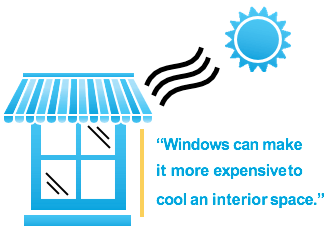
Solar screen window shades are one of the simplest and most effective window treatments for saving energy. Consider using dual shades with a highly reflective side for warm weather and a heat-absorbing dark side for cooler weather.
Window awnings can significantly reduce solar heat gain. They are most effective on south- and west-facing windows.
Window blinds let you adjust the slats to control light and ventilation. If partially raised, the blinds allow some air and daylight to enter through windows.
High-reflectivity window films help block summer heat gain. They are best used in climates with long cooling seasons because they also block the sun’s heat in the winter. Silver, mirror-like films typically are more effective.
Choose ENERGY STAR®-labeled office equipment.
Look around most offices and what do you see? Chances are, there are laptop and desktop computers, copy machines and networking equipment. Did you know that all of this office equipment can offer you opportunities to save?
When it’s time to purchase new equipment, simply look for the ENERGY STAR label. In general, these office products use about half the electricity of standard equipment. Along with saving energy directly, this equipment can reduce air-conditioning loads, noise from fans and transformers, and electromagnetic field emissions from monitors.
For example, on average, displays with the ENERGY STAR label are 25% more energy efficient than standard options.
Install occupancy sensors to increase efficiency.

Some occupancy sensors detect the space temperature and provide feedback to the heating, ventilation and air conditioning system. This means the HVAC can adjust for occupancy and business employees can see when a conference room is in use or vacant to help with scheduling.
Occupancy sensors that turn lights on and off can also indicate whether there are people present in work areas. This is critical for workers driving heavy-use vehicles.
What are the best places to install HVAC occupancy sensors in a business? Find out in a recent blog article from the PG&E Business Resource Center.
When they enter an area where lights are on, they know to be more aware of others.
For all these reasons, occupancy sensors are a smart money-saver. There are also DVC occupancy sensor rebates available from PG&E.
Use bi-level switching to control lighting output.
Bi-level switching provides business owners and managers simple manual control over lighting levels. This is important because it allows you to control lower overhead lighting levels for computer use, meetings or tasks that don't require a lot of light.
The way bi-level switching works is simple. In a three-lamp fluorescent fixture, for example, the outer lamps are switched on separately from the middle lamp. Employees can switch on one, two or all three lamps based on their needs. This is a win-win because it allows employees to control appropriate lighting levels and the business to save energy and money.
Establish task tuning to set lighting levels.
Imagine if you could set lighting levels to fit each task. That’s precisely what task tuning does.
Task tuning allows users to set light levels to suit a particular task or workspace. That can result in ongoing savings because certain workspaces are used sporadically and certain tasks require less illumination.
Setting light levels based on task or work-area productive usage empowers business owners and managers to conserve energy and allows their employees to remain.
Take advantage of rebates from PG&E.
California businesses are serious about saving money. PG&E is serious about energy efficiency.
That’s a very productive formula, because it has led to rebates for businesses ranging from biotech and builders to hospitals and offices.
Rebates are money that you receive after your business has upgraded to new, energy-saving products. Visit the rebates page on pge.com for rebates on:
- Lighting
- Refrigeration
- HVAC
- Food service equipment
- Boilers and water heating
- Business equipment
Power your business’s future with solar energy.
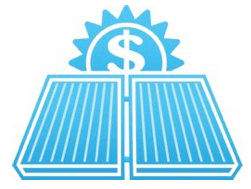
Solar photovoltaic systems capture sunlight and convert it into electricity. Solar photovoltaic systems are composed of individual solar cells configured onto a solar panel or module. The cell absorbs the sunlight’s energy and produces a flow of electrons, known as direct current (DC) electricity.
Because machinery operates on alternating current (AC), a device called an inverter converts the DC electricity to the AC power necessary to power your business.
Photovoltaic cells work any time the sun shines and will produce more electricity when sunlight strikes the PV modules directly rather than at an angle.
PG&E has helped customers connect more solar systems than any other utility in the country.
Another way that solar is working to power the future is with solar water heating.
Solar water heating systems are reliable and can last up to 20-25 years. In addition, if installed properly, they require very little maintenance.
On average, if a business installs a solar water heater, its cost to heat water is reduced by 50% to 80%1 and the payback can be as little as a couple years.
The cost of the system and how much a business can save depend on several factors, including the following:
- The amount of hot water the business uses
- The type and size of the solar water heating system
- The business's geographic location and ability to capture the sun
Use the Automated Demand Response Program from PG&E.

Customers who sign up to participate in Automated Demand Response will receive automated event signals from PG&E. These signals will be sought out by a technical solution on site that initiates pre-programmed strategies.
The Automated Demand Response incentive can make a project more financially viable by offsetting your project cost and lowering payback time. The incentive can be paid directly to you or assigned to your vendor or contractor.
Additionally, the program provides customers with:
- Assistance identifying load curtailment strategies
- Technical coordination during the equipment installation
To learn more, visit the Automated Demand Response Program page on pge.com.
Install variable frequency drives for HVAC systems.
Heating and cooling are often thought of as “the cost of doing business.” However, you can realize significant savings from your HVAC system by installing variable frequency drives.
Here’s how they work: The motors that operate the fans and pumps in your system typically operate at a constant speed, while your building’s heating and cooling load varies because of weather, occupancy schedules and other factors. Making fans and pumps work harder than necessary can be a substantial waste of energy.
Variable frequency drives counter that by enabling HVAC fans to respond more precisely to a building’s heating and cooling load. This saves significant energy and increases system performance. It also reduces mechanical stress and can prolong system life.
Upgrade HVAC and lighting systems.

Consider this a friendly nudge.
HVAC and lighting upgrades can significantly lower monthly utility bills and maintenance costs. These upgrades and retrofits also lead to less energy consumption and can help businesses gain compliance with the newest updates to California’s Title 24 Building Standards Code.
To determine the best option for your business, work with an HVAC contractor. You’ll find more information about choosing a contractor on page 34 of this eBook.
There are numerous ways to make HVAC and lighting upgrades more affordable. To learn more, download PG&E’s Insider’s Guide to Financing Energy Efficiency Projects.
Use programmable thermostats to control temperatures.
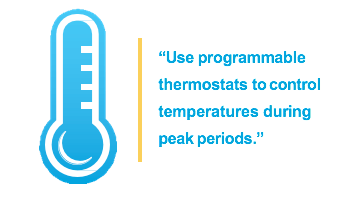
Other thermostats can learn your schedule without being programmed at all, and can make suggestions about how you can save energy. Some newer models can connect to your wireless Internet, so you can program and adjust your thermostat from your computer.
PG&E offers rebates of $14/ton on eligible programmable 7-day thermostats.
Update HVAC energy recovery ventilation systems.
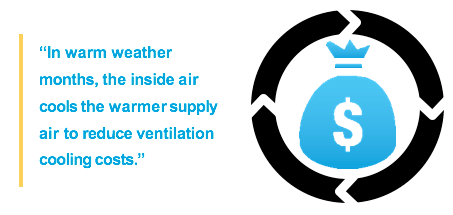
Here’s the issue: Exhaust air from inefficient HVAC systems means more energy is required to heat or cool incoming outside air. But you can help prevent that with energy recovery ventilation.
Energy recovery ventilation systems condition incoming fresh air by using reclaimed waste energy from the exhaust air stream. They work with your heating, ventilation and air conditioning system to lower energy costs and improve indoor air quality.
Now for the best part. Up to 80% of energy can be recovered from exhaust air. That’s why it pays to ask an HVAC contractor if energy recovery ventilation is right for your business.


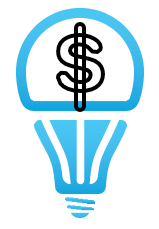 Change to LED bulbs.
Change to LED bulbs.

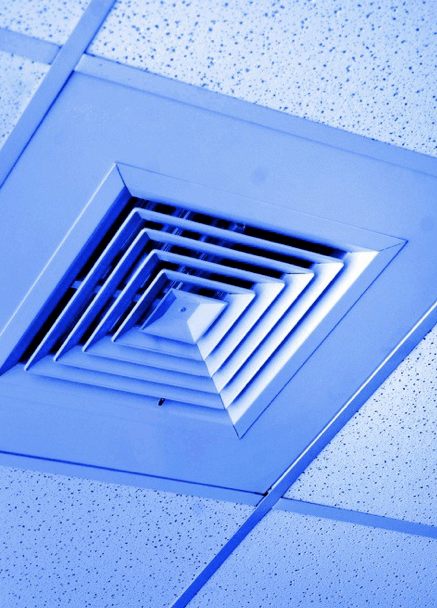
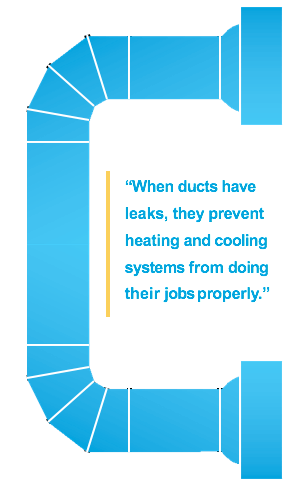 Check central heating and cooling duct systems for leaks.
Check central heating and cooling duct systems for leaks.


